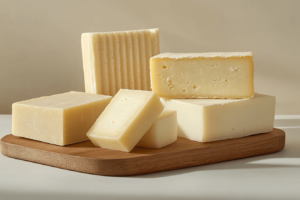Introduction
Mac and cheese is a comforting dish that warms the heart. But many people struggle to keep it smooth and luscious. They wonder why it sometimes ends up dry or clumpy. Indeed, the quest for creamy macaroni and cheese can feel frustrating at times. Yet there is hope. With the right strategy, you can prevent dryness and ensure a velvet-like texture. You only need to understand how basic ingredients work together. Then, you can adjust cooking methods for the best possible result. This guide will show you how to reach that perfect creamy consistency. You will discover key tips, learn from common errors, and get simple instructions on how to keep mac and cheese moist long after cooking. So settle in, because we will explore every aspect of making this dish.
We will share secrets that have been tried and tested in real kitchens across the country. Moreover, we will emphasize the importance of cheese selection. We will also show you why milk, cream, and butter each play a vital role. In short, you will find out what is the trick to keeping mac and cheese creamy. And, by the end of this guide, you will have all the confidence you need to make a crowd-pleasing meal.
Remember, we do not want any wasted effort or bland results. Instead, we want every forkful to feel indulgent. Hence, follow these tips and enjoy a bowl of gooey, cheesy goodness. Let us begin by exploring why a creamy texture is so important, and then we will work through common pitfalls and solutions.
What Is the Trick to Keeping Mac and Cheese Creamy Every Time
When people search for the best ways to keep mac and cheese creamy, they often feel overwhelmed. They might try fancy cheeses, or they might skip certain steps in the hopes of speeding up the process. However, the primary trick lies in balancing the sauce-to-pasta ratio, controlling heat properly, and using the right mix of cheeses and dairy.
Balance Sauce and Pasta
A key piece of the puzzle is keeping enough sauce around every noodle. If you use too much pasta and not enough cheese sauce, you will end up with a drier outcome. Therefore, start by measuring your macaroni carefully. You can always tweak the liquid level, but it helps to begin with a tested ratio. For instance, some cooks prefer a 1:1 ratio by weight between the pasta and the cheese sauce. Others find success with slightly more sauce than pasta.
Regardless, it is wise to err on the side of extra sauce. That way, your final dish will still feel moist and velvety. You can always reduce extra liquid if needed. Yet you cannot easily make your mac and cheese creamy if you have started with too little sauce.
Control the Heat and Timing
Next, you must watch the heat level, both on the stove and in the oven. Overcooked cheese sauces tend to separate. This happens when fats in the cheese lose their emulsion and begin to pool. In turn, your dish becomes grainy. Thus, keep an eye on your sauce while cooking it. Use gentle heat so your cheese melts rather than scorches.
Additionally, do not overbake your mac and cheese. Many recipes call for oven baking to create a crust on top, but too long in the heat can evaporate moisture. Then, the mac and cheese dries out. Instead, remove the dish from the oven as soon as the top looks golden. Let residual heat finish the cooking.
Choose the Right Blend of Cheeses
Finally, use cheeses that melt well and provide a rich flavor. Cheddar is a classic, but mixing in a bit of mozzarella or Monterey Jack helps with stretch and creaminess. Small amounts of cream cheese or mascarpone can also reinforce a silky mouthfeel. We will discuss cheese selection in more detail later.
All these elements combine to answer, “What is the trick to keeping mac and cheese creamy?” You must ensure that the cheese sauce forms a stable blend, that it does not overheat, and that there is enough sauce to coat every piece of pasta.
Why Creamy Consistency Matters for Mac and Cheese
Mac and cheese is a beloved staple across the United States. Families often serve it during the holidays, weeknight dinners, or backyard gatherings. Furthermore, it brings the comfort of carbs and cheese in every bite. But when it lacks creaminess, the dish loses much of its charm.
A smooth sauce clings to the noodles and provides consistent flavor. In contrast, a dry or lumpy sauce leads to a subpar meal. You might notice chewy bits of cheese or see the pasta drying out on your plate. This can feel disappointing, especially when you have put time and money into making your meal.
A creamy texture also improves reheating. If you store leftovers with enough moisture and fat, your next-day mac and cheese will taste better. You will not struggle with gummy noodles or oily separation. Instead, you will relive that comforting sensation when you warm it up.
Moreover, a creamy texture satisfies the senses. The smooth, rich sauce works well with a variety of extra ingredients. You can add bacon, vegetables, or different spices. Because the sauce forms a blank canvas, you can layer in more flavors without messing up the base.
Thus, focusing on creaminess is not just about taste. It is about achieving a uniform mouthfeel, preserving flavor, and making sure your mac and cheese stands out. In the following sections, we will explore common mistakes and how to avoid them. We will also see how certain ingredients unlock the best results.
Common Mistakes That Make Mac and Cheese Dry
Despite the simple nature of this dish, cooks often make a few common errors. Recognizing these pitfalls will help you avoid them and keep your mac and cheese creamy.
Mistake 1: Skipping the Roux
Some cooks rely solely on cheese and milk for the sauce. While this can work in some recipes, a roux (equal parts butter and flour) helps bind the sauce and prevents it from breaking. When you skip this step, you risk having a sauce that separates or stays runny.
Mistake 2: Overcooking the Pasta
Soft, overdone noodles do not hold sauce as well. After all, they start to break down and turn mushy. Thus, cook your pasta to al dente. Then, finish cooking it in the sauce, where it will absorb more flavor.
Mistake 3: Using Low-Fat Milk Only
A sauce that relies on skim or low-fat milk alone often lacks enough fat to stay stable. Indeed, you risk a watery or grainy texture. Therefore, use at least whole milk, and consider adding cream.
Mistake 4: Not Enough Cheese
Sometimes, people want to save money by reducing the amount of cheese. Yet mac and cheese demands ample cheese for both flavor and texture. Cutting back too far leads to dryness.
Mistake 5: Baking Too Long
Yes, a crunchy topping can be nice. However, that does not mean you need to bake the dish for half an hour. Most of the cooking should happen on the stove. A short baking period to melt cheese and brown the top is usually sufficient.
By steering clear of these mistakes, you set yourself up for success. You minimize dryness and help your mac and cheese retain its velvety feel.
Ingredient Choices to Keep Mac and Cheese Creamy
Selecting the right ingredients forms the base for a perfect dish. Each component plays a distinct role, from the cheese type to the dairy choice. Also, do not forget about seasonings and optional add-ins. They all affect the sauce.
Selecting the Right Cheese
Cheddar is classic, but it is not your only choice. Indeed, some of the best ways to keep mac and cheese creamy include mixing other melting cheeses.

- Mild Cheddar: Melts easily and has a mild flavor. Good as a primary cheese.
- Sharp Cheddar: Provides a tangy bite. Mix it with other cheeses to balance intensity.
- Mozzarella: Delivers stretchiness and a subtle taste. Helpful for that gooey pull.
- Monterey Jack: Creamy and mild. Works well in combination with cheddar.
- Gruyère: Adds a nutty twist. Melts well, though it can be pricier.
- Cream Cheese or Mascarpone: Brings extra smoothness. A little goes a long way.
Because various cheeses melt at different temperatures, a blend often creates a stable sauce. You get the flavors of cheddar along with the creaminess of a milder cheese. This synergy helps ward off dryness and lumps.
The Importance of Milk or Cream
The dairy element is the backbone of your cheese sauce. Many cooks choose whole milk because it offers enough fat to help keep everything together. However, heavy cream adds even more richness. If you want an extra-indulgent sauce, consider half milk and half cream.
Still, do not rely on heavy cream alone. Too much richness can overpower the flavor of the cheese. Also, it can make the dish feel heavy. Thus, aim for a balance. For example, one cup of whole milk and half a cup of heavy cream could be a good ratio if you are making a batch to feed four people.
Butter and Other Fats
Butter is essential for the roux, which is the mixture you form with flour. It contributes flavor, color, and helps form the base of the sauce. Unsalted butter is ideal because it lets you control the salt level.
If you want to add an extra hint of richness, a spoonful of sour cream or a dash of cream cheese can help. These additions lend body to the sauce, which keeps the mac and cheese from tasting bland or watery. They also make the sauce thicker and more stable.
Seasonings and Flavor Boosters
Seasonings do not directly impact creaminess, but they do influence how people perceive taste. Salt and pepper are must-haves. You might also add garlic powder, mustard powder, or paprika. These subtle flavors enhance the cheese profile.
In some cases, a teaspoon of Dijon mustard cuts through the richness. This trick brightens the dish without making it taste like mustard. Also, if you enjoy a bit of spice, a pinch of cayenne pepper or chili flakes can add warmth.
Cooking Methods to Achieve Velvety Mac and Cheese
Selecting the right technique matters as much as the ingredients. Sometimes, cooks see recipes that call for a direct stovetop method. Others might say you should bake the entire dish. Both approaches have their benefits, but each requires special care to maintain that creamy consistency.
Stove-Top Approach
Many people say the stove-top method is the simplest way to keep mac and cheese creamy. You have more control over heat levels. Plus, you can stir and adjust seasonings in real time.

- Cook the Pasta: Bring salted water to a boil and add your macaroni. Cook it until it is just shy of al dente. Then drain it.
- Create the Roux: In a pot, melt butter and whisk in flour. Stir constantly until it becomes a light golden color. This usually takes a couple of minutes.
- Add Dairy: Slowly pour in milk (and cream if you choose) while whisking. Stir until the sauce thickens. This step helps prevent lumps.
- Stir in the Cheese: Once the sauce is thick enough to coat the back of a spoon, lower the heat. Then, add shredded cheese in small handfuls. Keep stirring to let each addition melt fully before adding more.
- Combine with Pasta: Gently fold the cooked macaroni into the sauce. Season with salt, pepper, and any other spices you like.
You can serve it right away for a super-creamy experience. If you want a bit of a toasted finish, you can sprinkle cheese or breadcrumbs on top and broil it for a minute or two. Keep a close eye on it to prevent drying.
Baked Method Without Drying Out
Baked mac and cheese has a loyal following. People love the crisp topping and the slight crust on the edges. However, the risk is that the dish can dry out if left in the oven too long. So use these tips to maintain creaminess:

- Use Enough Sauce: Start with a looser sauce than you might think you need. Baking will thicken it.
- Slight Underbake: Cook in the oven just until the top turns golden. Then remove it. The dish will continue to set from residual heat.
- Cover If Needed: If you plan to bake for a longer time, cover the dish loosely with foil to trap moisture. Take the foil off in the last few minutes to brown the top.
This way, you enjoy that familiar baked texture without sacrificing the creamy center.
Potential Additional Flavor Boosters
Sometimes, you might want to impress guests or elevate your usual recipe. In that case, you can add mix-ins that complement the smooth sauce.
- Caramelized Onions: Add sweetness and a richer depth of flavor.
- Bacon Bits: Crumbled bacon adds a salty crunch.
- Roasted Garlic: Provides a subtle, savory note.
- Sauteed Mushrooms: Infuse an earthy taste without making the dish watery.
- Shredded Chicken: Transforms mac and cheese into a heartier meal.
Yet always remain mindful of moisture levels. Introducing watery ingredients can dilute the sauce. Opt for pre-cooked or well-drained additions.
Best Practices After Cooking
Once you have achieved creamy mac and cheese, you will want to keep it that way. People often ask how to keep mac and cheese creamy after cooking. The good news is that a few precautions help you preserve the sauce for later.
- Cover the Dish: Keep it covered if it will sit out on a buffet table. This prevents the top from drying out.
- Serve in Smaller Batches: If you are hosting a party, serve smaller amounts at a time. Refill the serving dish with a new batch when needed. That way, you do not expose all of it to air for too long.
- Reheat Gently: When warming leftovers, add a splash of milk or cream. Stir often to reincorporate the sauce.
- Cool and Store Promptly: If you have leftovers, move them into an airtight container once the dish has cooled slightly. Put them in the fridge to avoid bacteria growth and maintain quality.
These steps help ensure you can enjoy a second or third serving that tastes nearly as good as the first.
Storing Leftovers and Keeping Them Creamy
Proper storage plays a huge role in preserving texture. Once your meal is ready, it can be tempting to leave it in the pot on the stove. However, you should transfer any extra portions to a tightly sealed container.
Let the mac and cheese cool a bit on the counter, but do not wait too long. Bacteria can grow if the food sits out for more than two hours. Place the sealed container in the refrigerator, where it should keep well for up to three days.
When you want to enjoy leftovers, the secret is gentle reheating. Put your portion in a small pot or skillet. Add a splash of milk or cream, then stir over low heat. That helps loosen the sauce and restore its creamy feel. If the sauce looks too thick, add a bit more milk in small increments. Meanwhile, keep stirring to prevent scorching.
Another option is to reheat leftovers in the microwave, though you should do so at reduced power to avoid overheating. Pause midway and stir in a little milk if needed. This helps redistribute heat and maintain that velvety consistency.
Frequently Asked Questions
How do you reheat mac and cheese and make it creamier?
Reheat it gently on the stove or in the microwave with a splash of milk or cream. Stir often to avoid lumps. Adding a small amount of butter can also boost smoothness.
Why is my homemade mac and cheese not creamy?
Common reasons include not using a roux, using too little cheese, or cooking at too high a temperature. Also, low-fat dairy can lead to a watery sauce.
How do you keep mac and cheese from drying out?
Use enough sauce-to-pasta ratio and do not overbake. Cover your dish or stir frequently on the stovetop. Also, choose cheeses that melt well and add sufficient fat.
How do you keep mac and cheese creamy after cooking?
Keep it covered to prevent moisture loss. Add extra liquid when reheating. Store leftovers in airtight containers, and reheat on low heat.
Conclusion
Mac and cheese remains a favorite comfort food for many Americans. Still, achieving that perfect, creamy texture sometimes feels elusive. Yet you now know what is the trick to keeping mac and cheese creamy. From choosing a quality cheese blend to controlling heat and moisture levels, you can ensure a dish that delights. By focusing on your sauce, timing, and ingredient selection, you avoid dryness and enjoy a velvety result.
Moreover, proper storage and gentle reheating mean you can savor any leftovers without losing quality. Above all, remember that you are in charge of the sauce. Stir, taste, and adjust as needed. Then you will find yourself serving mac and cheese that is consistently delicious, from the first bite to the last. Enjoy!

